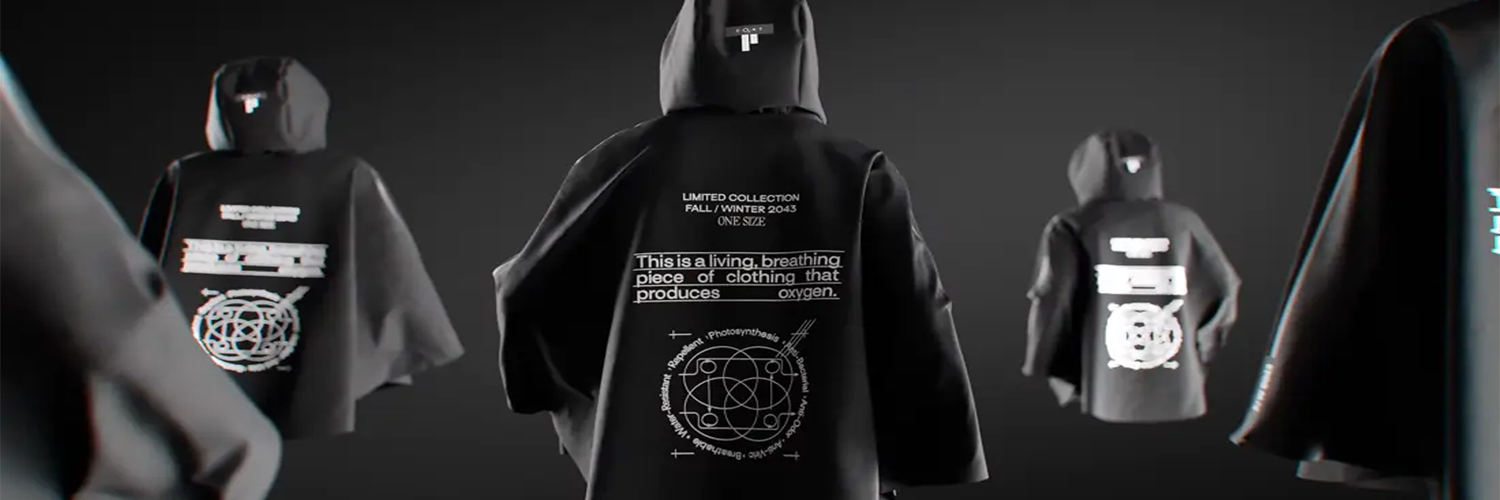Fashion was responsible for 2.1 billion metric tons of greenhouse-gas (GHG) emissions in 2018—about 4 percent of the global total, according to McKinsey research. As the denim industry works to develop innovative methods for reducing CO2 emissions, one mill is thinking outside the box.
Pakistan-Based Azgard-9 Just Debuted A Piece Of Clothing That Produces Oxygen In Addition To Offering Sustainable And Antibacterial Properties. The mill worked with London-based Post Carbon Lab, a design research studio focused on sustainability, to develop a poncho that mimics a plant’s ability to photosynthesize and release O2 into the environment.
Though the poncho is not intended to be sold as is, it can serve as inspiration for brands to take it further and apply the technology to other garments. “[The prototype can] show fashion houses and retailers that concepts we once associated with sci-fi are available to us right here right now and can help us rethink the future, in a demonstration of possibilities that Azgrd-9’s technology might add to these brands,” the company said in a statement.
The development is part of “Future Before Fashion,” Azgard-9’s recent push for future-focused solutions that have a low impact on the environment. It complements the mill’s sustainable practices such as digital sampling and utilizing organic and recycled cotton.
Azgard-9’s clients include Tommy Hilfiger, G-Star Raw and Gap, all known for their dedication to sustainability. By 2030, Tommy Hilfiger aims to reduce the carbon footprint of its value chain again ahead of science-based target requirements, recycle or re-use all of its waste and use water sustainably—by ensuring that water leaving wet processors will have zero hazardous chemicals and will be filtered for microfibers, and by working with others to preserve water resources in high-risk basins.
This comes as companies start designing materials based on biological processes. German textile chemical company Rudolf Group is embracing natural sources as the key components for two new Durable Water Repellent (DWR) technologies, which use a balanced mix of plant-based ingredients to achieve water and stain-repellent effects with breathability and a natural handle.
Luxury conglomerate Kering is also committed to improving the environment through its business practices. By 2025, it will convert 1 million hectares of farms and rangelands into regenerative agriculture, protect an additional 1 million hectares of critical “irreplaceable” habitat outside its supply chain through programs that support biodiversity protection, carbon sequestration and livelihood improvements, and launch a Kering for Nature Fund to help the fashion industry accelerate its shift to regenerative agriculture.
Azgard-9’s innovation is made of a membrane-bound polyamide which makes it breathable, waterproof and thermoregulating. Additionally, the fabric is treated with an anti-bacterial and anti-viral component, which eliminates the need for frequent home washing. Though it currently only exists as a prototype, Bernardo Lago Cruz, Azgard 9’s business development associate said it’s a starting point for something big.
“In order to create change in the industry, we need to come up with realistic solutions that are serving a purpose for the consumer in general,” he said. “This project brings something that is conceptual and not implemented on a large scale to the mainstream realm. This contribution itself is an example of how the denim industry in particular can adopt carbon negative actions in the production of denim.”
High-tech solutions are becoming the norm in the denim industry. Earlier this year, trims manufacturer YKK unveiled a new program that uses an AI-powered “brain” to visualize carbon dioxide absorption at its Kurobe manufacturing site in Japan. Using the system’s innovative sensors, the company receives insight into local meteorological and environmental data such as ground temperatures.
Similarly, denim bleaching recently got an AI update with the development of Wox, a device that collects data on the denim production process and feeds it to artificial intelligence algorithms.










Add comment